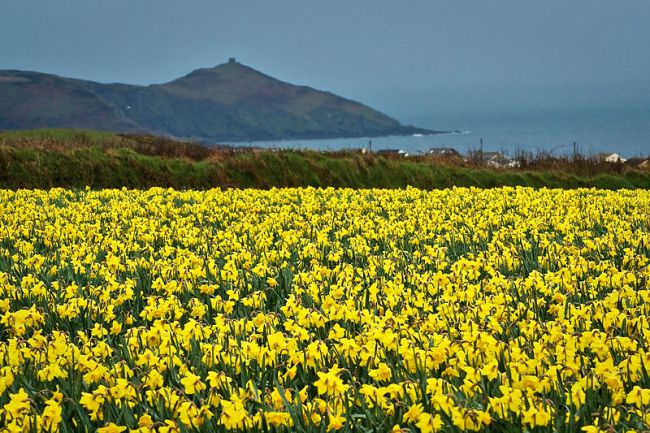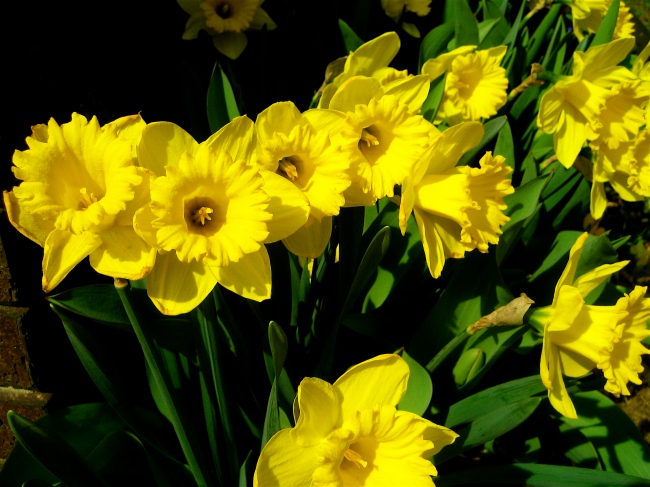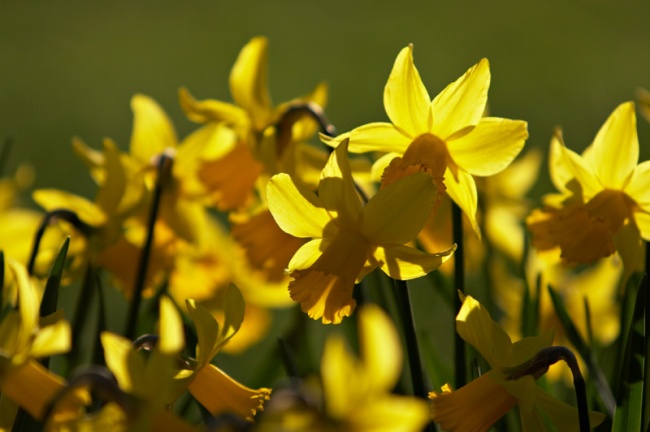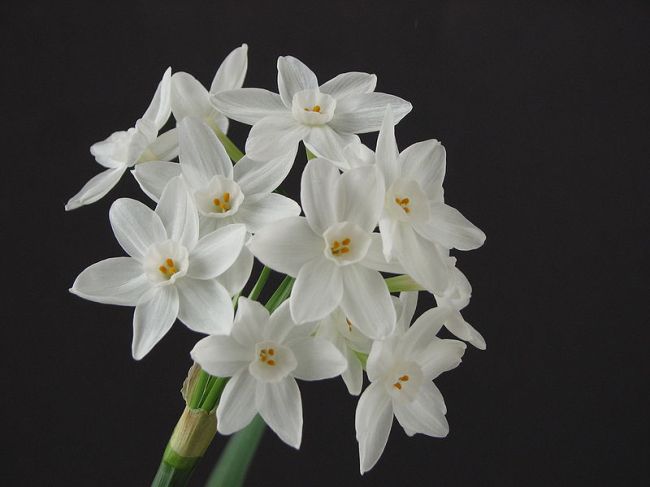
Daffodil field in South East Cornwall. Mark Robinson. Wikimedia Commons.
Daffodils are quite the common sight this time of year in the Southeast US and warmer parts of Europe (where they originate). Winter being unusually prolonged this year has halted the majority blooms from opening up until April here, which is rather unusual even for cold years as they are the first large bulbs to bloom reliably each year.The fragrance is the mid-spring fragrance I associate with spring finally having come to my part of the world, with a sweet, musky, and earthy olfactory trinity. The flowers are easy to grow and care for for the most part, and I’ve seen them growing in even the worst types of soil and still blooming reliably.

Narcissus pseudonarcissus. Johnathan J. Stegeman. Wikimedia commons.
There are so many different types and species, that the easiest way for me to talk about them is for me to split them myself between the large cupped and small cupped species. There does exist a list of horticultural divisions of the species- check the wikipedia page for info. For the large-cupped species, the most common garden ones are N. psuedonarcissus– native to Western Europe, and growing in woodlands and crags all over the continent, wild or not. They are called wild daffodils for this reason, and lenten lilies due to their bloom period coinciding with Lent. These particular plants also last so long in the garden that one would think them native to old estates in the US as well, where a certain planting could easily be over 50 to 100 years old, surviving from the bulbs and their propagules planted so long ago.
There are many subspecies and hybrids to choose from, and they all share the characteristic earthy sweet scent with a fine musk, that even perfumes the air when grown in clusters. They come mostly in yellow and white and last for a couple weeks usually before burning out and being replaced by other bulbs.

Narcissus minor var. conspicuus. Daniel Mosquin. http://www.botanicalgarden.ubc.ca
N. minor is the other main large-bulbed daffodil grown, and has a fragrance unlike its brother N. psuedonarcissus that is much more variable depending on the cultivar. Wilder makes note of this in The Fragrant Path, and talks about different species being scented like vanilla, magnolia, cowslips, or musk. I certainly can see all of these and have smelled enough to agree myself with this. These are often the grocery store daffodil bulbs, as they are a tad bit smaller and sweeter than N. psuedonarcissus, but not any less dazzling in the garden! Tomorrow (hopefully) I will get to the jonquils, as they are sweeter than their larger brothers. I would be remiss if March went by and I didn’t talk about them!

